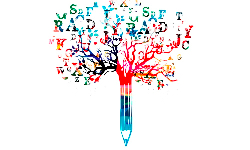There is always a discrimination when it comes to the races in every sector of our life. So, there’s also a question of priority present in the schools and colleges for valuing or devaluing the higher or middle classes compare to the working and lower classes. The author Anjali Pattanayak tried to highlight all those discriminations between classes and races in the writing and speaking field in her article “There is One Correct Way of Writing and Speaking,” in the Bad Ideas About Writing book. In solution to that from the further reading section of the essay Asao Inoue suggested how to organize the college class lessons in an easier and everyone reachable way in his book “Race and Writing Assessment,” for the diverse students across the country so that they understand and get most of the benefits they get wherever they go.
Pattanayak mostly focused on how the lower- or working-class people are suffering as speakers and writers at their own workplaces. She said “They understand that conversations that may be appropriate over a private dinner may not be appropriate at the workplace. These conversational shifts might be subtle, but they are distinct (Pattanayak 82).” Working class people doesn’t really understand or the change of this conversational shift. They get confused and make a mess in their output through speaking or writing. By stating working- or lower-class people Pattanayak mainly indicated to the African Americans or the other outsiders who comes to the country in order to change their luck. Naturally they are not native speakers nor some of them aren’t even used to speak English as their second language. So, they have a very short knowledge about the language and the uses of it in different places and situations. Pattanayak thinks the in the schools and colleges teaching way of language and the cultural topics may need to change because it is another reason of the slow growth of the lower-class families and the students of those families among others. She expressed her thought like this “In the context of educational settings, the cultures and identities of academia are valued more than those of the students, which sends the message that how they, their family, and members in their community speak and act are wrong by comparison. In essence, it sends the message starting at a very young age that who they are and where they come from is somehow lesser (Pattanayak 83).”
In this perspective Asao Inoue tried to come with the solutions in his article “Race and Writing Assessments.” In his opinion, “writing assessment needs to change in order to account for the increasing diversity of students in college classrooms today (https://eric.ed.gov/?id=ED533148).” He thinks there should not be anyone-size-fits-all type of model in any educational system in any institutions. The practical advice, assignments and assessments all should be organized in a way that is reachable for all levels of life. No one should not feel that they do not belong in this society, or they are trash. Everyone has a role from their perspective and it’s all our job to make each other valuable and productive. All this reflects in Inoue’s words where he said, “the assessment practices attuned to racial diversity must be rooted in the contexts in which they are found (https://eric.ed.gov/?id=ED533148).”
In conclusion, both the authors Pattanayak and Inoue seems to have the same discussion about the English as a language to the people who aren’t mostly familiar with it. Pattanayak says there’s not enough opportunity for the diverse students to accept English as writing and speaking source and Inoue discussed about how to train the teachers and improve the class modules to prepare all levels of students so that they can easily get to the most of the language in whichever way they want to use it.
Works Cited
Anjali Pattanayak “There is One Correct Way of Writing and Speaking,” Bad Ideas About Writing, edited by Cheryl E Ball and Drew M Loewe, West Virginia University 2017, pp. 82-87. https://textbooks.lib.wvu.edu/badideas/badideasaboutwriting-book.pdf
Inoue, Asao “Race and Writing Assessment,” (2012). Peter Lang New York (vol. 7), Pages 230 https://eric.ed.gov/?id=ED533148 .



 Many people can picture themselves writing as a child their favorite memory in class, or writing about slaying a dragon over the winter. That’s what a lot of people imagine when they picture creative writing. However, some see creative writing as writing, while other forms are just put aside. In the book “Bad Ideas About Writing,” Cydney Alexis explains that “People who write everything except poetry and fiction—that is, people who contribute the vast majority of writing to the world in the form of lists, essays, emails, blog posts, texts, instruction manuals, and so on—see their work as less creative and less important.” (Alexis 188) This a really bad idea, as it sidelines other forms of writing and uncreative and unimportant. Creative writing is not just a unique category, but one where all spectrums of writing can be seen under one category. Creative writing should be taught as an equal with all writing styles.
Many people can picture themselves writing as a child their favorite memory in class, or writing about slaying a dragon over the winter. That’s what a lot of people imagine when they picture creative writing. However, some see creative writing as writing, while other forms are just put aside. In the book “Bad Ideas About Writing,” Cydney Alexis explains that “People who write everything except poetry and fiction—that is, people who contribute the vast majority of writing to the world in the form of lists, essays, emails, blog posts, texts, instruction manuals, and so on—see their work as less creative and less important.” (Alexis 188) This a really bad idea, as it sidelines other forms of writing and uncreative and unimportant. Creative writing is not just a unique category, but one where all spectrums of writing can be seen under one category. Creative writing should be taught as an equal with all writing styles. 
















